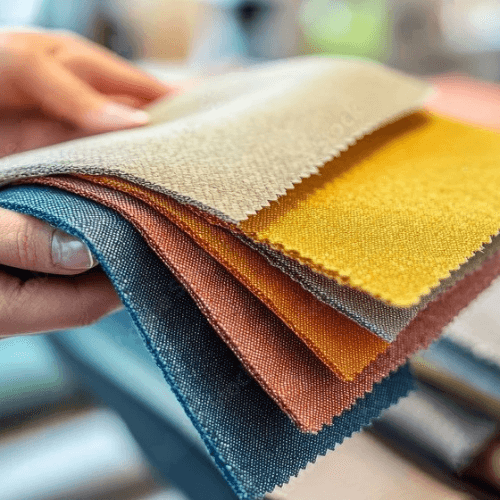Understanding Consumer Preferences in Global Textile Markets

As the global textile market continues to evolve, understanding consumer preferences is crucial for businesses looking to thrive in this competitive landscape. In 2024, factors such as sustainability, e-commerce growth, cultural influences, and economic considerations significantly shape consumer behavior. This blog explores these elements to provide insights into what buyers are looking for in textiles today.
### 1. **The Shift Towards Sustainability**
One of the most significant trends impacting consumer preferences in the textile industry is the growing demand for sustainable products. As awareness of environmental issues rises, consumers are increasingly seeking fabrics that align with their ethical values. Key aspects of this trend include:
– **Eco-Friendly Materials:** Consumers are gravitating towards textiles made from organic or recycled materials. Fabrics such as organic cotton, Tencel, and recycled polyester are gaining popularity as buyers prioritize sustainability in their purchasing decisions.
– **Transparency and Ethical Practices:** Shoppers are demanding transparency from brands regarding their sourcing and production processes. They want to know that their purchases support ethical labor practices and environmentally friendly methods.
– **Willingness to Pay More:** Research indicates that a significant portion of consumers—especially Gen Z—are willing to pay a premium for sustainable products. Reports show that around 73% of Gen Z consumers prefer brands that demonstrate a commitment to sustainability, influencing market dynamics significantly.
### 2. **E-Commerce Growth and Digital Engagement**
The rise of e-commerce has transformed how consumers shop for textiles. The convenience and accessibility of online shopping have led to several notable changes in consumer behavior:
– **Increased Online Purchases:** The COVID-19 pandemic accelerated the shift towards online shopping, with many consumers continuing to prefer this method even as physical stores reopen. E-commerce platforms offer a broader selection of fabrics and styles, allowing consumers to compare prices and find unique products easily.
– **Social Media Influence:** Platforms like TikTok and Instagram play a crucial role in shaping consumer preferences. Many shoppers discover new brands through social media, where influencers showcase textile products and promote sustainable practices. Engaging content on these platforms can drive purchasing decisions significantly.
– **Direct-to-Consumer (DTC) Models:** More brands are adopting DTC strategies, allowing them to connect directly with consumers without intermediaries. This approach enhances brand loyalty and provides consumers with a more personalized shopping experience. Reports indicate that 85% of businesses are using DTC models, reflecting a shift towards more authentic customer relationships.
### 3. **Cultural Influences on Textile Choices**
Cultural factors also play a significant role in shaping consumer preferences in global textile markets:
– **Regional Trends:** Different regions have unique cultural influences that affect fabric choices. For instance, traditional garments may dominate markets in Asia, while Western countries may see a preference for contemporary fashion trends.
– **Fashion Influences:** The rise of social media has led to increased exposure to global fashion trends. Consumers are now more likely to seek out styles that reflect current trends seen on international runways or popular culture, leading to an upsurge in demand for fashionable textiles.
– **Heritage and Craftsmanship:** There is a growing appreciation for textiles that showcase local craftsmanship and heritage. Consumers are increasingly interested in unique fabrics that tell a story or support local artisans, driving demand for traditional weaving techniques and locally sourced materials.
### 4. **Economic Considerations**
Economic factors continue to influence consumer behavior in the textile market:
– **Disposable Income Levels:** As disposable incomes rise in emerging markets, consumers are more willing to invest in quality textiles and fashionable clothing. Conversely, economic downturns can lead to more cautious spending habits, pushing consumers towards budget-friendly options.
– **Value for Money:** In times of economic uncertainty, consumers prioritize durability and quality over quantity. They seek textiles that offer longevity and versatility, leading to increased interest in timeless designs rather than fast fashion[7][8].
### 5. **Technological Innovations**
Advancements in technology are reshaping consumer preferences within the textile industry:
– **Smart Textiles:** The integration of technology into fabrics—such as moisture-wicking properties or temperature regulation—has created new opportunities for innovation. Consumers are increasingly interested in performance-enhancing textiles that cater to active lifestyles.
– **Digital Customization:** Online tools that allow consumers to customize fabrics or clothing items have gained popularity. This personalization enhances the shopping experience and allows customers to express their individuality through unique designs.
### Conclusion
Understanding consumer preferences in global textile markets is essential for businesses aiming to succeed in an increasingly competitive environment. The shift towards sustainability, the growth of e-commerce, cultural influences, economic considerations, and technological innovations all play pivotal roles in shaping buyer behavior.
By staying attuned to these trends and adapting product offerings accordingly, textile companies can better meet consumer demands while fostering brand loyalty and driving sales growth. As we move through 2024 and beyond, embracing these insights will be crucial for navigating the complexities of the global textile market effectively.






